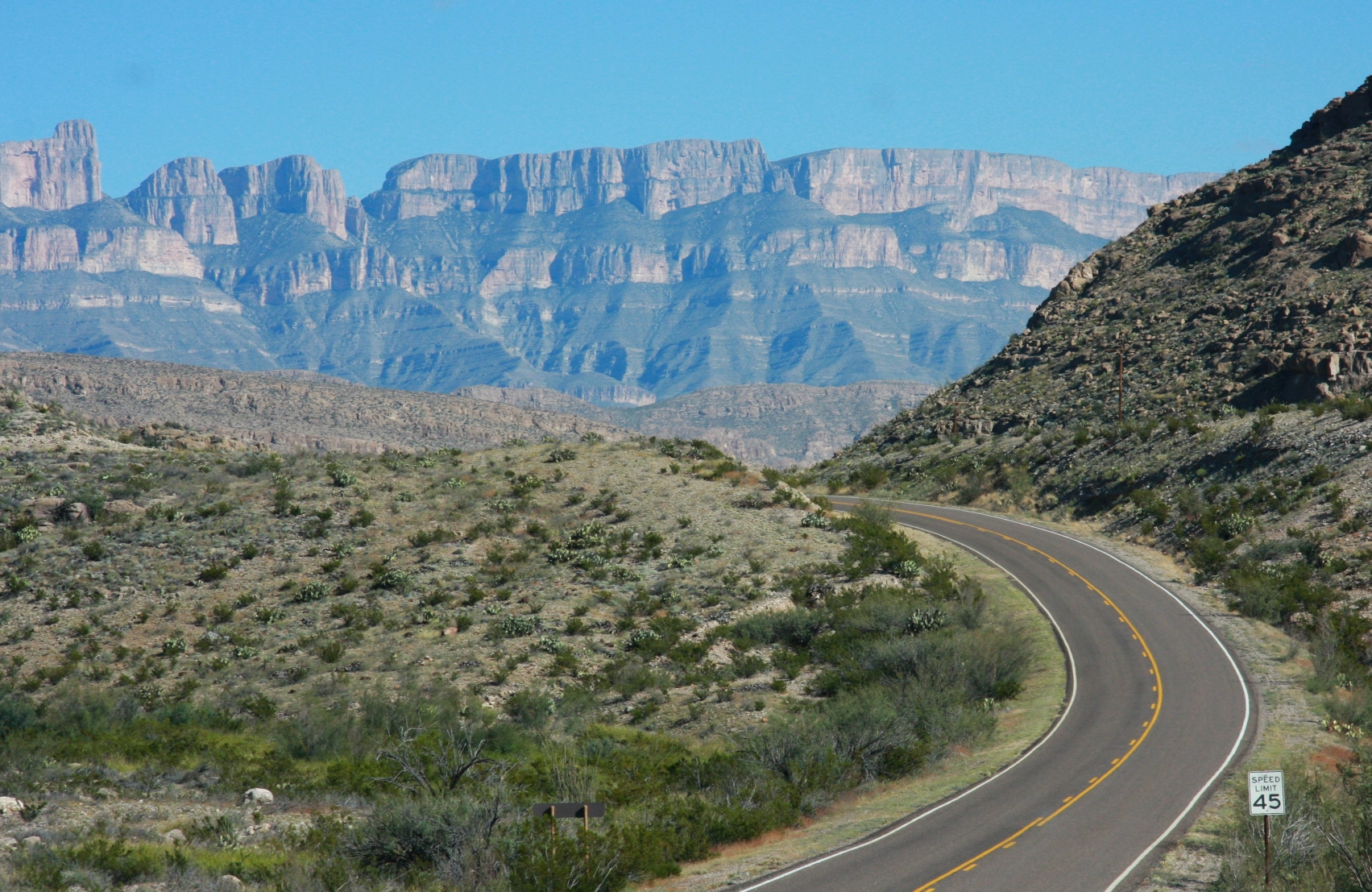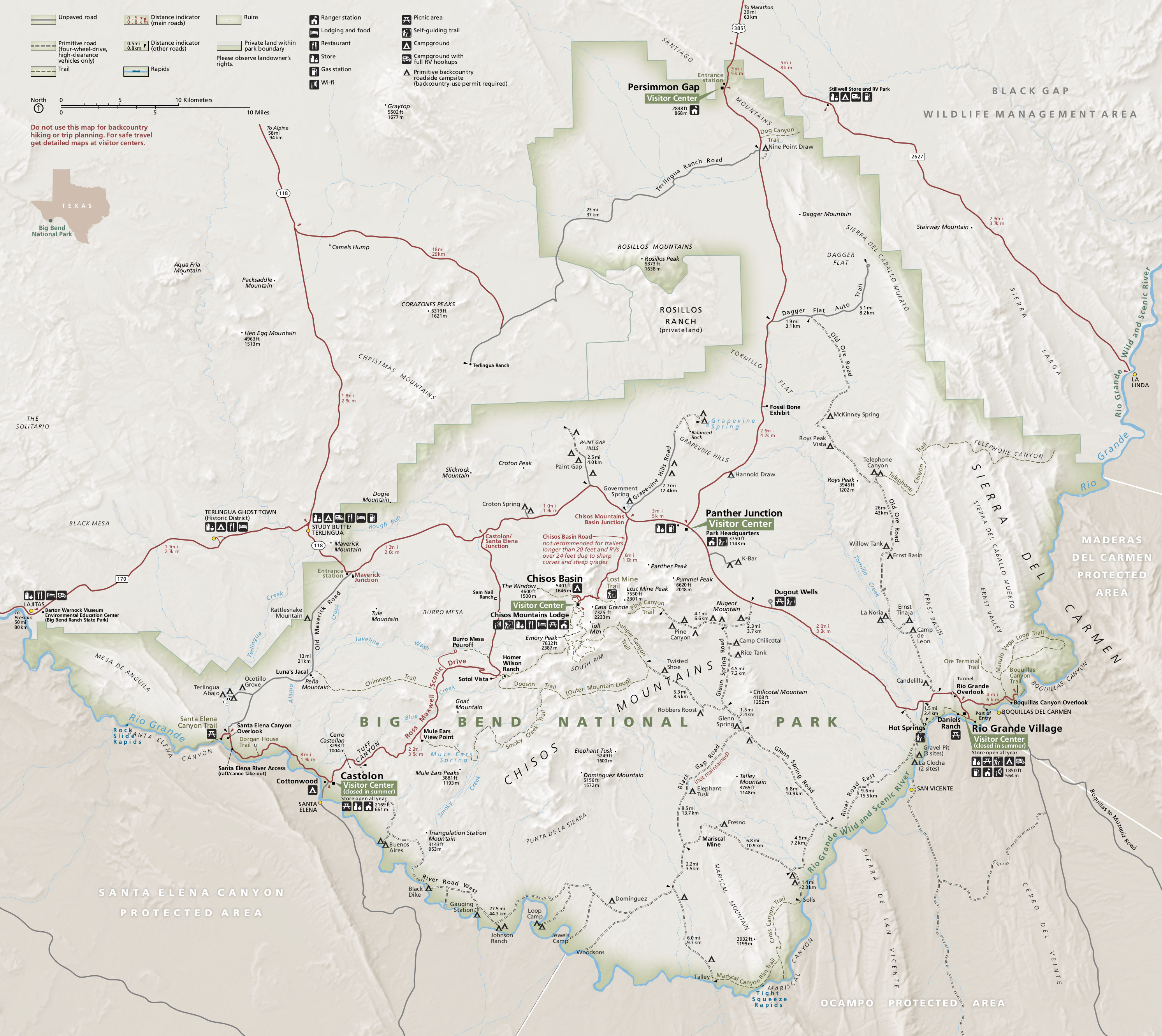|
Ocampo Flora And Fauna Protection Area
Ocampo Flora and Fauna Protection Area is a protected area in northern Mexico. It covers an area of 3442.38 km2 in the state of Coahuila. It is bounded on the north by the Rio Grande, which forms the border with the United States. It adjoins Maderas del Carmen Biosphere Reserve on the west, Cañón de Santa Elena Flora and Fauna Protection Area to the east, and Big Bend National Park to the north across the Rio Grande. Together these protected areas form the Mexico-United States international park, also known as El Carmen Big Bend Complex, a proposed transboundary protected area which protects a significant portion of the eastern Chihuahuan Desert and the Rio Grande valley. Flora and Fauna According to the National Biodiversity Information System of Comisión Nacional para el Conocimiento y Uso de la Biodiversidad The (CONABIO; ) is a permanent inter-ministerial commission of the Mexican government, Federal Mexican government, created in 1992. It has the primary purpose ... [...More Info...] [...Related Items...] OR: [Wikipedia] [Google] [Baidu] |
Ocampo Municipality, Coahuila
Ocampo is one of the 38 municipalities of Coahuila, in north-eastern Mexico, and the largest by area. The municipal seat lies at Ocampo. The municipality covers an area of 26,433 km² and is located on the international border between Mexico and the USA, here formed by the Río Bravo del Norte (Rio Grande), adjacent to the U.S. state of Texas. In 2010, the municipality had a total population of 10,991. accessdate=April 29, 2011 Towns and villages The largest localities (cities, towns, and villages) are:Adjacent municipalities and counties * - northeast *[...More Info...] [...Related Items...] OR: [Wikipedia] [Google] [Baidu] |
Coahuila
Coahuila, formally Coahuila de Zaragoza, officially the Free and Sovereign State of Coahuila de Zaragoza, is one of the 31 states of Mexico. The largest city and State Capital is the city of Saltillo; the second largest is Torreón and the third largest is Monclova (a former state capital); the fourth largest is Piedras Negras; and the fifth largest is Ciudad Acuña. Coahuila borders the Mexican states of Nuevo León to the east, Zacatecas to the south, and Durango and Chihuahua to the west. To the north, Coahuila accounts for a stretch of the Mexico–United States border, adjacent to the U.S. state of Texas along the course of the Rio Grande (Río Bravo del Norte). With an area of , it is the nation's third-largest state. It comprises 38 municipalities ''(Municipio (Mexico), municipios)''. In the 2020 Census, Coahuila had a population of 3,146,771. History The name Coahuila derives from native terms for the region, and has been known by variations such as Cuagüila and ... [...More Info...] [...Related Items...] OR: [Wikipedia] [Google] [Baidu] |
Mexico
Mexico, officially the United Mexican States, is a country in North America. It is the northernmost country in Latin America, and borders the United States to the north, and Guatemala and Belize to the southeast; while having maritime boundary, maritime boundaries with the Pacific Ocean to the west, the Caribbean Sea to the southeast, and the Gulf of Mexico to the east. Mexico covers 1,972,550 km2 (761,610 sq mi), and is the List of countries by area, thirteenth-largest country in the world by land area. With a population exceeding 130 million, Mexico is the List of countries by population, tenth-most populous country in the world and is home to the Hispanophone#Countries, largest number of native Spanish speakers. Mexico City is the capital and List of cities in Mexico, largest city, which ranks among the List of cities by population, most populous metropolitan areas in the world. Human presence in Mexico dates back to at least 8,000 BC. Mesoamerica, considered a cradle ... [...More Info...] [...Related Items...] OR: [Wikipedia] [Google] [Baidu] |
Mexican Flora And Fauna Protection Areas
Mexican Flora and Fauna Protection Areas (''Áreas de Protección de Flora y Fauna'' in Spanish) comprise 29 protected natural areas of Mexico administrated by the National Commission of Protected Natural Areas (''Comisión Nacional de Áreas Naturales Protegidas'', or CONANP), an agency of the federal government. They are areas established to conform to the regulations provided by the LGEEPA and other applicable laws on places that contain habitats for which their existence depends on their preservation, transformation, and support of the species of flora and fauna. List of Mexican Flora and Fauna Protection Areas Baja California * Valle de los Cirios * Islas del Golfo de California (Islands of the Gulf of California) (also in Baja California Sur, Sonora, and Sinaloa) Baja California Sur * Balandra * Cabo San Lucas Campeche * Laguna de Términos Chiapas * Cascada de Agua Azul * Chan-Kin * Metzabok * Nahá Chihuahua * Campo Verde * Cañón de Santa Elena * Cerro Mohi ... [...More Info...] [...Related Items...] OR: [Wikipedia] [Google] [Baidu] |
National Commission Of Natural Protected Areas
There are currently 232 Protected Natural Areas in Mexico, covering 98 million hectares in total. They are protected and administered by the National Commission of Protected Natural Areas (''Comisión Nacional de Áreas Naturales Protegidas'', or 'CONANP'), a federal agency under the Secretariat of Environment and Natural Resources (SEMARNAT). CONANP administers: * 79 Mexican National Parks * 48 biosphere reserves * 57 flora and fauna protection areas * 28 Mexican Nature Sanctuaries * 15 natural resources protection areas * 5 natural monuments History In 1988, the Congress of the Union passed LGEEPA, which provides the government's modern framework for environmental protection law. However, the law only outlined some of the protection categories, with SEMARNAT creating separate ones in cases like the Tutuaca Flora and Fauna Protection Area, which formed in 2001 as a merger between the Tutuaca National Forest Reserve and Wildlife Refuge Zone. CONANP presidents *2001–2010: ... [...More Info...] [...Related Items...] OR: [Wikipedia] [Google] [Baidu] |
Rio Grande
The Rio Grande ( or ) in the United States or the Río Bravo (del Norte) in Mexico (), also known as Tó Ba'áadi in Navajo language, Navajo, is one of the principal rivers (along with the Colorado River) in the Southwestern United States and in northern Mexico. The length of the Rio Grande is , making it the List of longest rivers of the United States (by main stem), 4th longest river in the United States and in North America by main stem. It originates in south-central Colorado, in the United States, and flows to the Gulf of Mexico. The Rio Grande drainage basin (watershed) has an area of ; however, the endorheic basins that are adjacent to and within the greater drainage basin of the Rio Grande increase the total drainage-basin area to . The Rio Grande with Rio Grande Valley (landform), its fertile valley, along with its tributaries, is a vital water source for seven U.S. and Mexican states, and flows primarily through arid and semi-arid lands. After traversing the length ... [...More Info...] [...Related Items...] OR: [Wikipedia] [Google] [Baidu] |
Maderas Del Carmen
Maderas del Carmen is a biosphere reserve in the northern Mexican state of Coahuila. Maderas del Carmen encompasses part of the Sierra del Carmen, a northern finger of the Sierra Madre Oriental range. The reserve includes both dry Chihuahuan Desert shrublands and forested sky island, high-elevation enclaves of Sierra Madre Oriental pine-oak forest. The reserve is home to 400 bird species and 70 mammal species, including the American black bear (''Ursus americanus''), collared peccary (''Pecari tajacu''), and cougar (''Puma concolor''). The region was designated a biosphere reserve in 2006. It is located in the municipalities of Ocampo, Ciudad Acuña, and Múzquiz. Conservation efforts The isolation of the Sierra del Carmen and its relatively undisturbed environment has led to conservation efforts in Mexico and jointly with the United States. Much of the Sierra del Carmen has been declared by the government of Mexico the Maderas del Carmen Flora and Fauna Protected Ar ... [...More Info...] [...Related Items...] OR: [Wikipedia] [Google] [Baidu] |
Cañón De Santa Elena Flora And Fauna Protection Area
The Cañón de Santa Elena Flora and Fauna Protection Area (Spanish: ''Área de Protección de Flora y Fauna Cañón de Santa Elena'') is a protected area for plants and wildlife in the Mexican municipalities of Manuel Benavides and Ojinaga, in the state of Chihuahua. It was founded on November 7, 1994 and has an area of 277,209 hectares. The purpose of the reserve is to protect the Chihuahuan Desert, home to many species of plants and wildlife. Diverse species of the former category are found among scrub stands, microphyll desert, rosetophylous scrub, pasture, oak forest and riparian zones. Birds and mammals that have adapted to aridity, such as wildcat and some deer, as well as birds of prey, highlight the latter category. History The arrowheads, mortars and paintings found at the site indicate the following human occupation periods: Paleo-Indian (15,000–6,500 BC), Archaic (6500 BC – 900 AD), early Postclassic (900–1500 AD), and late Postclassic (1300–1680). The ... [...More Info...] [...Related Items...] OR: [Wikipedia] [Google] [Baidu] |
Big Bend National Park
Big Bend National Park is a List of national parks of the United States, national park of the United States located in West Texas, bordering Mexico. The park has national significance as the largest protected area of Chihuahuan Desert topography and ecology in the United States, and was named after a Big Bend (Texas), large bend in the Rio Grande, Rio Grande/Río Bravo. The park protects more than 1,200 species of plants, more than 450 species of birds, 56 species of reptiles, and 75 species of mammals. Additional park activities include scenic drives, programs led by Big Bend park rangers, and stargazing. The area has a rich cultural history, from Prehistoric art, archeological sites dating back nearly 10,000 years to more recent pioneers, ranchers, and miners. The Chisos Mountains are located in the park, and are the only mountain range in the United States to be fully contained within the boundary of a national park. Geological features in the park include sea fossils and Fos ... [...More Info...] [...Related Items...] OR: [Wikipedia] [Google] [Baidu] |
Transboundary Protected Area
A transboundary protected area (TBPA) is an ecological protected area that spans boundaries of more than one country or sub-national entity. Such areas are also known as transfrontier conservation areas (TFCAs) or peace parks. TBPAs exist in many forms around the world, and are established for various reasons. The preservation of traditional animal migration patterns, ensuring sufficient food and water sources for population growth, is a critical reason for the creation of TBPAs. However, TBPAs also encourage tourism, economic development and goodwill between neighbouring countries, as well as making it easier for indigenous inhabitants of the area to travel. Types of transboundary protected areas TBPAs exist in various types of geographic configuration, with various levels of ecological protection, and with various levels of international cooperation. Additionally, different organizations employ different definitions for TBPAs. Julia Marton-Lefevre broadly defines TBPAs as " ... [...More Info...] [...Related Items...] OR: [Wikipedia] [Google] [Baidu] |





